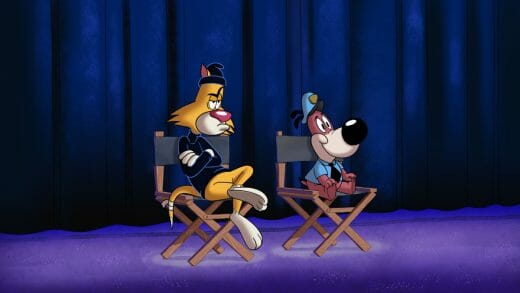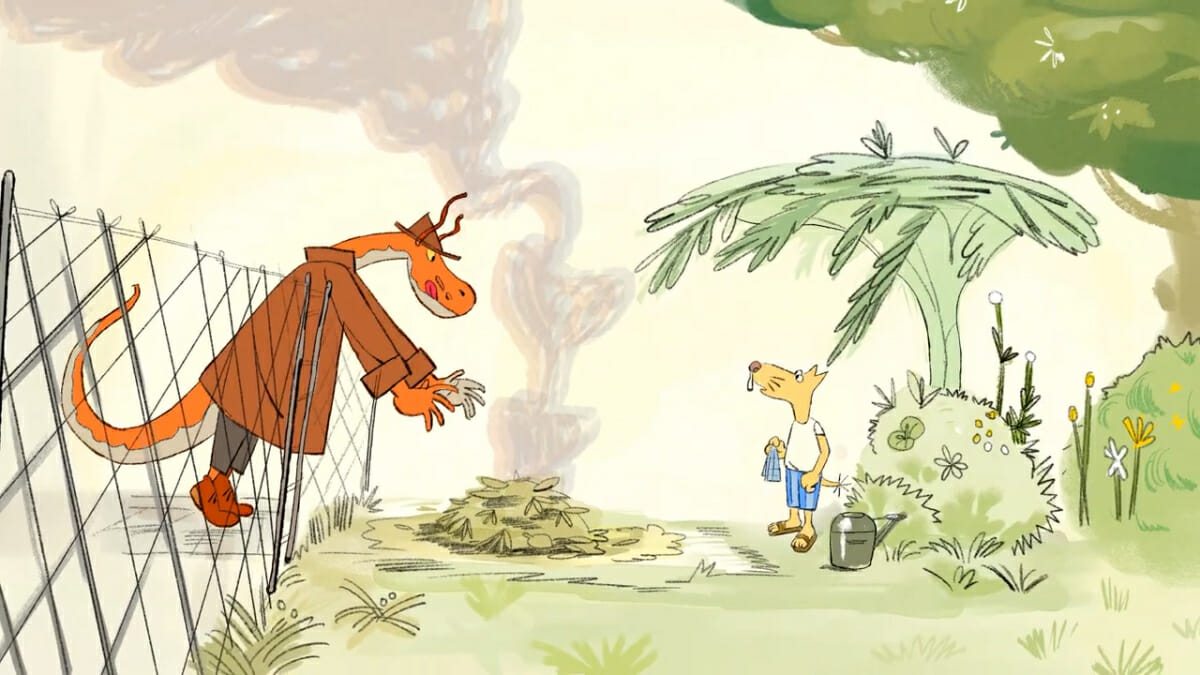
Adam Musa Othman is a Malaysian designer and animator, and a recent graduate of the Character Animation program at the California Institute of the Arts. Recently, Adam’s short film, Horned Cook, Gola took home the award for Best Animation at the Fine Cut Festival of Films. The short film was made as Adam’s 4th-year project in the CalArts program.
We caught up with Adam to hear about his experience studying animation at CalArts, his process behind storyboarding Horned Cook, Gola, as well as his his advice for aspiring animation students or those looking to get into animation.
Hi Adam! How did your career in animation start?
Adam: Growing up, I was always drawing, but I hadn’t thought that much about a career in animation. What really inspired me was this BBC special I saw, called Revolting Rhymes. I was inspired by the writing, as well as the design and animation. Everything came together so beautifully. Watching it, I thought, I’d love to be part of making something like that.
About a year before, I was doing an arts foundations program in Malaysia, and I decided I’d be interested in pursuing animation work. My family felt that it would be a good idea to study animation in the US. So I shifted to an American degree program.
When I eventually applied to CalArts, I applied using my personal work. I didn’t have much work I could use from any classes I had prior in the foundations program, as none of it matched the requirements for art school applications and I was only enrolled for half a year. I have always enjoyed doing character drawings whenever I could, so that represented a huge chunk of my work.
In my artist statement, I actually mentioned how inspired by Revolting Rhymes I had been. I didn’t think I would be accepted into the program, but to my surprise, I was!
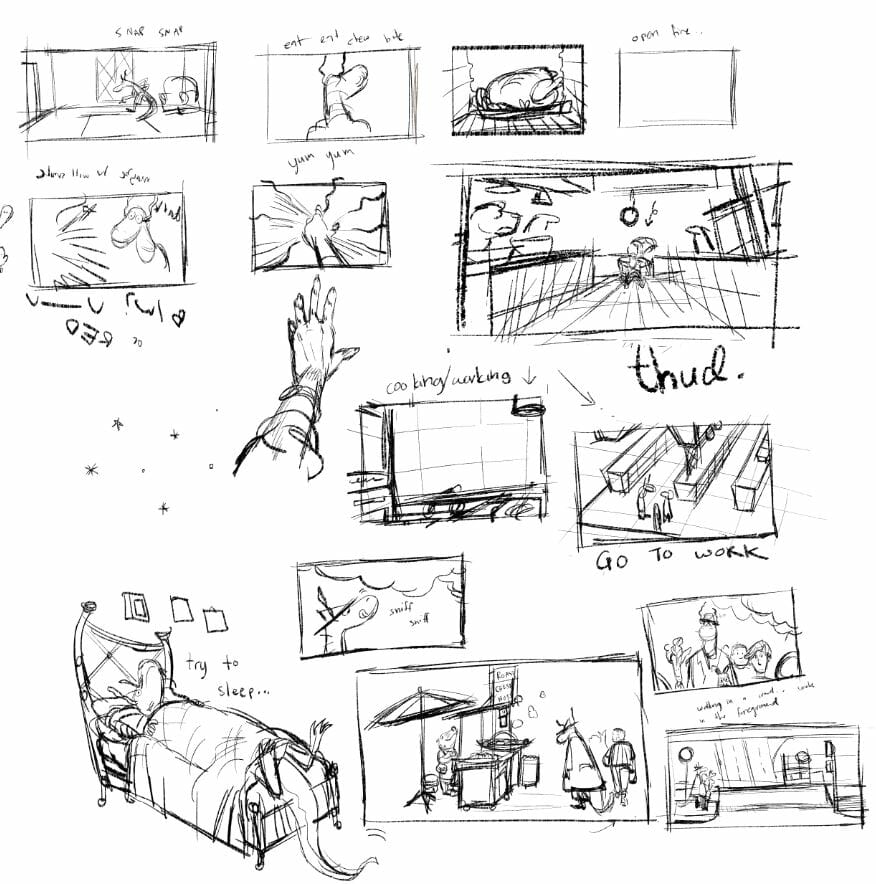
What drew you to the CalArts animation program?
Adam: What caught my attention about CalArts is that its students make a film in every single year of the 4-year program. That sounded super challenging to me, and having gone through it, I can confirm that it is. Making three films throughout the program was hard, but worth it because I learned a lot.
I should clarify; students typically make a new film every year, but in the second semester of my second year, the Covid pandemic hit and we were advised to stop working on our films. So my second-year film, Boys Night in Sidera Institute, ended up being a film I worked on through my third year. And my fourth-year film, Gola, was made through my fourth year in the program.
What inspired the story for your fourth year film, Horned Cook, Gola?
Adam: It started off with me creating the character Gola, who’s a dragon. I thought this character was really cute, and I wrote a whole story about him. At the time I didn’t think I’d ever create a film about Gola, but I love this character so much, I decided to tell his story for my final year at school. Actually, the story in the film has stayed pretty true to the original story I wrote.
The story was inspired by the question of whether or not dragons are fireproof. I figured that yes, since they make fire, they must be. So then, what would happen if a fireproof dragon worked in a kitchen? I developed the story around this question. How would a character act if they seem to be unaffected by fire? And how would the people around the character react to that?
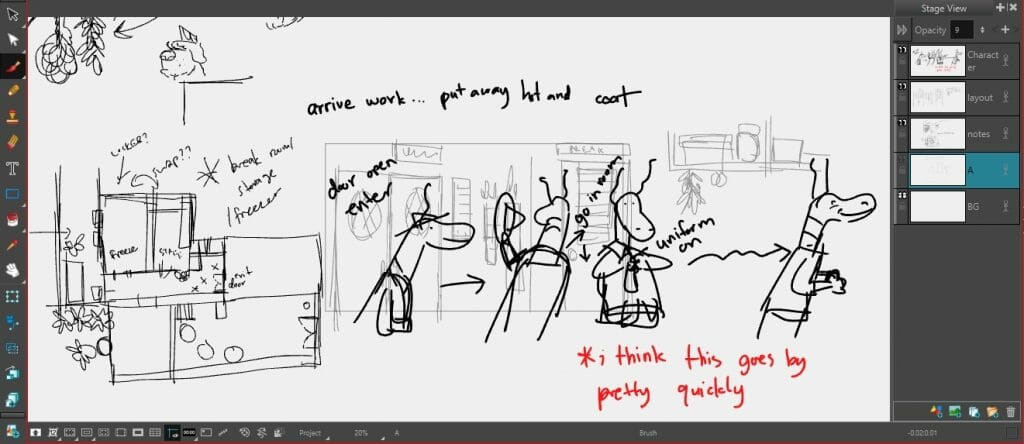
What was the most challenging part of planning and storyboarding Horned Cook, Gola and how did you overcome that challenge?
Adam: The biggest challenge was knowing that there were specific moments I wanted to have in the film. I had to figure out how I could make those moments work in the narrative that I’d envisioned. The way I overcame this was by not being too precious about the middle section of the film, since it was a section that was the least clear to me.
During storyboarding, I knew how the film would start and end, but I wasn’t sure about the middle. At one point, I just wrote notes to myself for the middle section boards. Like, “Gola works here” and “something goes wrong.” It was helpful for me to just put those ideas down, move on, and come back to them later. In the end it worked out, because I’ve heard positive feedback about the middle section of the film.
Could you describe your process for pre-production and storyboarding?
Adam: Before I started storyboarding for the film I knew there were some things I wanted to incorporate. For example: I wanted the film to have several moments where multiple characters are looking in the same direction, and I knew I wanted stuff to be flat for a lot of the wider shots. I thought about many of these specifics before I started the boarding.
I had a script and outline written, and I had the dialogue reviewed by some friends and classmates. Some things were added and some things were removed during production, too. We are required to take film workshop classes where we pitch and review our film work every week for the full academic year.
In storyboarding Horned Cook, Gola, I let myself be really loose with the drawings, even when I was pretty far into pre-production. I could do this because I knew that I was the only person who would have to refer to them later. So, I drew in a way that I knew would make sense to me when I came back to those boards. I could sit down and plus the backgrounds, layouts, and animation when I started production.
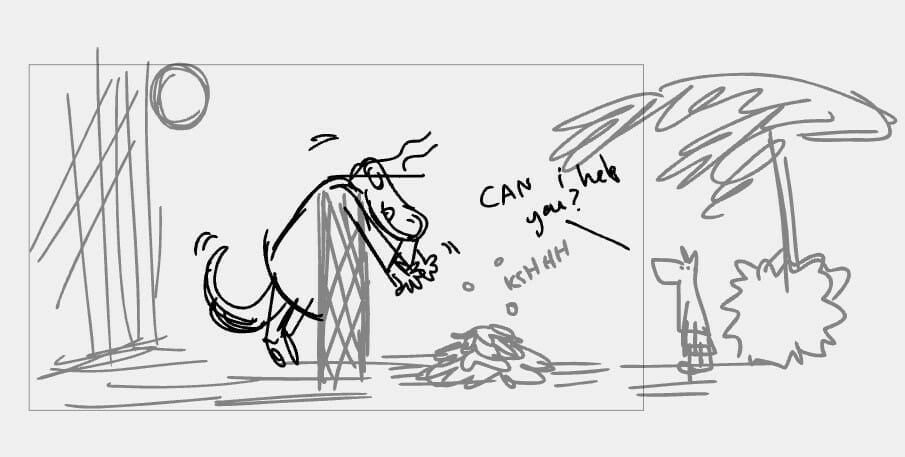
What inspired Horned Cook, Gola‘s visual look?
Adam: The look of the film was definitely inspired by children’s picture books, storybooks, as well as by some of the animated shorts that are on the National Film Board of Canada’s YouTube channel. I love how picture books for kids, and NFB shorts strike a balance between having strange, maybe even scary characters and moments, without actually being scary. Occasionally, something disturbing occurs in these books and films, but it doesn’t linger on it for too long! Something about that feels confident and sincere to me. That’s what I wanted to do with Gola.
Which of Storyboard Pro‘s features were most useful on this production?
Adam: Storyboard Pro’s infinite canvas and camera were incredibly useful in boarding my previous film, Boys Night in Sidera Institute, as well as Horned Cook, Gola. Boys Night in Sidera Institute was more visually dense, and animated more intensely. It was in making that film that I realized how helpful infinite canvas and the camera can be in the storyboarding process.
With an infinite canvas, you’re able to draw stuff as big or as small as you want. When you want layouts to be really big, you can do that without having to start a new project, and then you can simply move the camera or reframe.
here is a shot i like.. the idea was simple, but it was frustrating to put together.. the image file for the tiles were very big https://t.co/l5VwM3s0Sn pic.twitter.com/x2lGQdJ2mU
— Adam Musa (looking for work!) (@admooosa) November 14, 2021
I was able to draw this scene in one single panel, because I could draw everything, and then just move the camera around. This is what the storyboard looked like for the scene:
the boards look like this and it was supposed to be a single camera move, but AE could not handle it pic.twitter.com/uaHmAYrQXv
— Adam Musa (looking for work!) (@admooosa) November 14, 2021
What were the most exciting parts of the filmmaking process?
Adam: My favourite part of making Horned Cook, Gola was definitely writing and animating dialogue! None of my previous films included dialogue, and so this was something I specifically wanted to try out. It was really exciting to hear people doing their line reads for the characters, and I had a lot of fun animating that dialogue. Character acting and performance has always been my favourite part of animation, so it felt great to be able to do more of that.
It was also interesting to create a film that had dialogue because it means you can drive the story through spoken words, rather than just visually. In some ways dialogue made it easier to work on this film, because in moments where I wasn’t sure how to drive the story forward visually, I could just have a character talk through it, and tie it all together with the visuals.
Do you have any advice for up and coming animators working on their thesis films?
Adam: I’m sure this is common advice, but it’s important to not overcomplicate your film. Going into making Horned Cook, Gola, I consciously looked for ways to make the animation process more simple. For example, in a previous film I’d made, there were lots of shots of full-body character acting, which meant I had to animate lots of walking and running, which is tough and work intensive.
When I made Horned Cook, Gola, I storyboarded in a way that would make the animation easier. The main thing I did was frame the characters from waist up, so that I didn’t have to draw their whole bodies in so many shots. Not only did this make animation easier, but it gave me more space to focus on the characters in detail.
This is just an example of how I simplified my film. There’s lots of different ways that you can board, in a simplified way, that will still feel good in the finished film. I think being conscious of not overcomplicating is key for student films in particular, because often, you’re the only person working on the project. This makes time management super important.
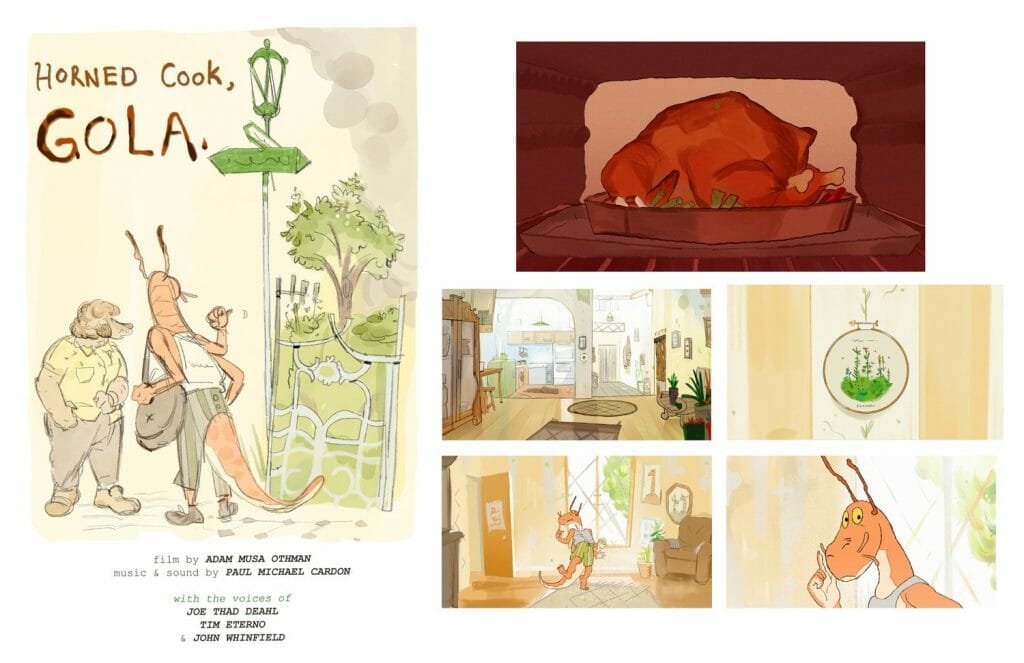
What advice do you have for people who are interested in studying animation?
Adam: I’ve found that if you have a character that you like to draw, and are passionate about, you should lean into that. That character is your superpower. For example, Gola is a character I really love, and that made me really motivated to create a film about him. Having that passion is what will help you succeed, or at least, make work that is special to you.
What’s next for you in animation?
Adam: Right now I’m working on portfolio projects as well as some freelance animation. I’m hoping to build up my portfolio so that I can land work in animation, characters, props, or backgrounds. I’m also pretty open to working in storyboarding.
In terms of personal projects, I’d love to make a comic, or another film. A couple people have asked if there will be a sequel to Horned Cook, Gola, and I do think that’d be cute. I have no plans for that at the moment but we’ll see what happens.
- Interested in seeing more work from Adam? Be sure to visit his website and YouTube channel, and also follow him on Twitter and Instagram.
- Interested in using Storyboard Pro for your thesis film? Learn more about Toon Boom’s discounted student licenses.


